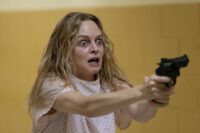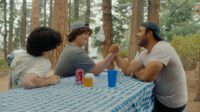As many a cinephile knows, adapting Richard Wright’s Native Son has always been a challenge. After his Book-of-the-Month bestseller topped the charts in 1940, Wright was eager to see it reach new audiences in other media. He would spend the better part of a decade hoping to see his most fully realized, widely read novel reach the screen. He had better luck in the theater, where in 1941 he worked with Mercury Theater producer John Houseman, director Orson Welles, lead actor Canada Lee, and playwright Paul Green to dramatize Native Son for the stage. But even that process proved a challenge: a fierce debate between Green and Wright is the core of the new film The Problem of the Hero, directed by Shaun Dozier and adapted itself from a stageplay by Ian Finley.
“The problem of the hero,” as Wright saw it, was the question of who had the right to tell Bigger Thomas’ story. Bigger was Native Son‘s protagonist, a young Black man from the southside Chicago projects who inadvertently kills a rich young white woman, flees the police, then rapes and murders his own girlfriend before he is found, arrested, imprisoned, and tried for his crime. To reduce Native Son to a potboiler plot summary is to do it an injustice itself: Wright’s novel was a masterpiece of American naturalism told in a limited point of view through its protagonist’s filter, a psychological exploration of the young man’s panic and the social forces that constrained and defined him. Both gripping and challenging, Wright’s novel demanded much of his readers.
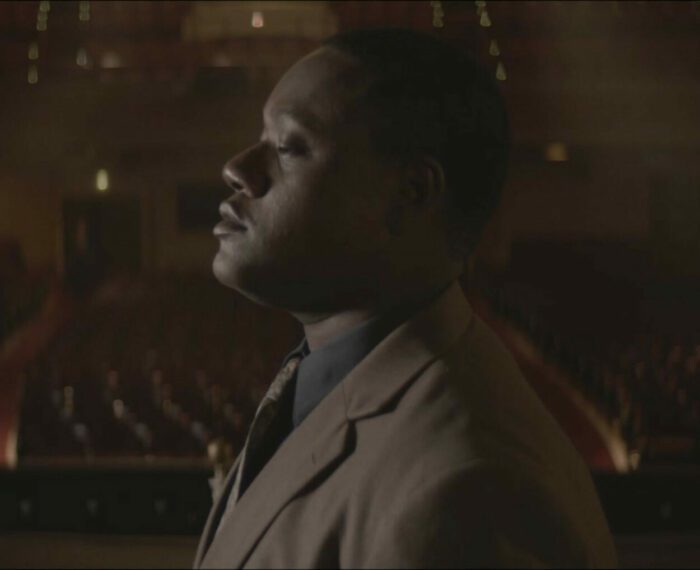
The problem with Native Son, at least for adapting it to the stage or the cinema, was twofold: first, Bigger’s crimes were heinous, perhaps most especially the second, more premediated and inexcusable of the two; and second, its final act was all talk and no action, a long (and to many readers tedious) sequence of monologues from the prosecuting attorney and Bigger’s defense lawyer Max dutifully cataloguing what readers already knew. Conflicted, Wright knew he would need to make changes. But he was wary of any such change that might diminish his novel’s considerable weight.
The Problem of the Hero focuses its lens on a dramatized meeting between Wright (played here by J. Mardrice Henderson) and Green (David zum Brunnen) just prior to the Broadway opening of the play in 1941. Wright had enlisted Green, a Pulitzer Prizewinning playwright and social-justice advocate, to help shape Native Son for the stage, but the two locked horns when it came to the stageplay’s ending, their difference isolated here to a single page of the script.
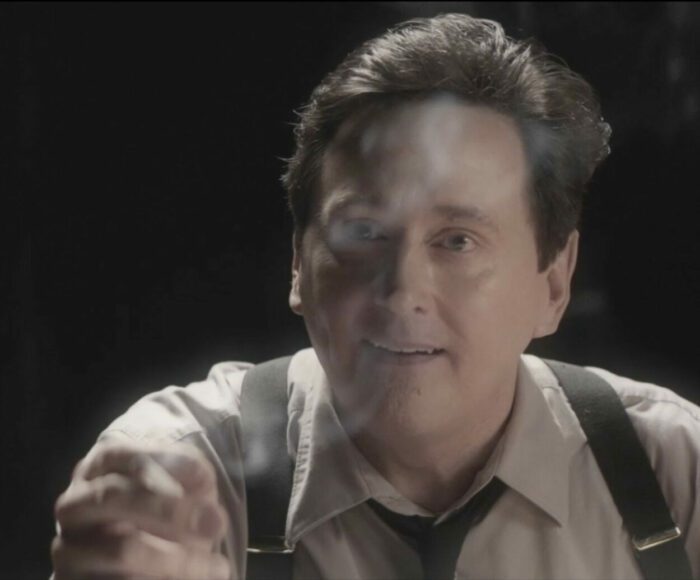
Both men review rehearsals and confer with others on set—Welles and Lee, in particular—but the film uses the debate between Wright and Green to explore broader issues of race, social justice, individual agency, and creative license. Their core disagreement is one that, in the wake of the George Floyd murder and subsequent protests worldwide, still resonates today. Green had fought in the trenches in World War I and believed fervently that the United States’ democracy could achieve progressive social change. Wright was a member of the Communist party whose experience with racism led him to conclude that only revolution could free the marginalized from the tentacular grip of capitalism.
What The Problem of the Hero does best is to take ideological positions and frame them in the dialogue between its two protagonists. Any student or reader of American literature, anyone interested in the history of the theater, or of race relations more broadly, will find The Problem of the Hero instructive and insightful. There is no record of the exact points of contention between Green and Wright—the latter later fictionalized their conversations in an unpublished dialogue he called himself “The Problem of the Hero”—but the script and the performers alike convey the conflicts here with commitment and clarity.
The Problem of the Hero is more theatrical than cinematic in its structure and presentation. While it’s evolved in its own adaptation from the theater to the cinema, as per its EP and co-star zum Brunnen, scenes are comprised primarily of lengthy dialogues between characters: Green and Wright, Wright and Nell Harrison (the actor cast as Mrs. Dalton, the wealthy blind white woman whose daughter is killed by Bigger), Green and Lee, with some of these rendered predominantly in a simple uncut two-shot. Some of the staging—in particular, two characters seated a distance apart in an otherwise empty theater—looks and feels like the consequence of strict Covid-era social distancing protocols.
The play Native, from which The Problem of the Hero was adapted, evolved out of initial discussions with the Paul Green Foundation. That fact helps explain why it is that a film that takes up the problem of Native Son from the perspective of the white man whose job it was to alter it. Given that Wright’s novel has long bedeviled literature scholars—it was for a time nearly universally canonical, now only rarely read or taught, its having become seen by some as a tragic caricature of black rage for white liberal apologists—it’s hard not to wonder if a script exploring its adaptation could have been presented from Wright’s perspective. After all, he and his biographers have both written about the episode, and the Mercury Theater’s Native Son production is well documented.
By most accounts, that Mercury Theater production of Native Son was a rousing success with Canada Lee as Bigger Thomas in the starring role. (Brandon Haynes is excellent in a small role as the boxer-turned actor here.) It followed Welles and Houseman’s “Voodoo” Macbeth, itself the subject of a recent and somewhat similar historical-fiction film and was the last time the two legends of the theater collaborated. The Green-White play is still performed, on occasion.
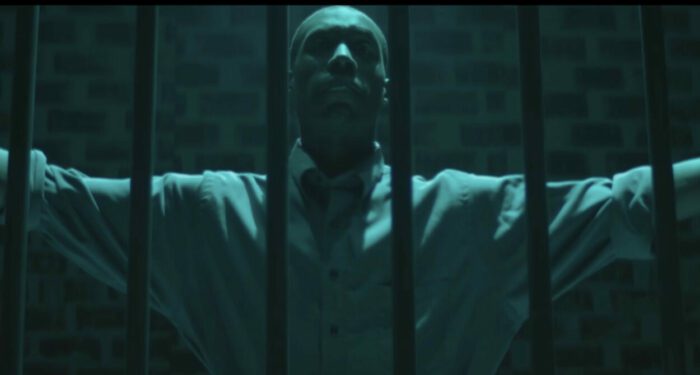
Nearly a decade later after the episode dramatized in The Problem of the Hero, Wright would finally see Native Son adapted to film. That process was even more complicated. Hollywood producers of the censorious Hays-code era wouldn’t touch a property where a black man killed—and to them, worse, kissed—a white woman. One independent producer proposed, I am not kidding, making the protagonist white! With Lee no longer available, Wright eventually made the film in Argentina with a French director and played his much younger protagonist Bigger Thomas himself, at age 48, to scathing reviews. Wright was a writer, not an actor; a middle-aged man, not a strapping youth. That film’s absurd voice-of-God narration was a poor substitute for the artistry of Wright’s naturalistic, cinematic prose.
Like the 1950 version of Native Son, neither of the novel’s two later adaptations—one in 1986 starring Victor Love, Oprah Winfrey, and Elizabeth McGovern, and another in 2019, a modernized version starring Ashton Sanders, Margaret Qualley, Nick Robinson—could bring themselves to let Bigger Thomas rape or murder his girlfriend Bessie. (The 1950 version alluded to Wright’s Bigger doing so in a nightmare sequence.) It’s as if every attempt to adapt Native Son finds the source text too objectionable to be adapted faithfully, a work that warrants a course correction. The novel’s curious history of cinematic adaptation illustrates, like The Problem of the Hero, just how difficult and contentious a matter adaptation can be, especially with a novel as incendiary and challenging as Native Son.
The Problem of the Hero examines a pivotal moment in American literature and theater with a well-researched script and well rehearsed cast. While it may bear evidence of its own theatrical origins as well as of strict covid production protocols, its intentions are honorable and necessary. If as a consequence a wider audience learns of the debate between Green and Wight, considers their broader implications for 21st-century America, and finds themselves perhaps inspired to read and watch further, The Problem of the Hero has done its job.
The Problem of the Hero is currently playing at film festivals across the United States.


